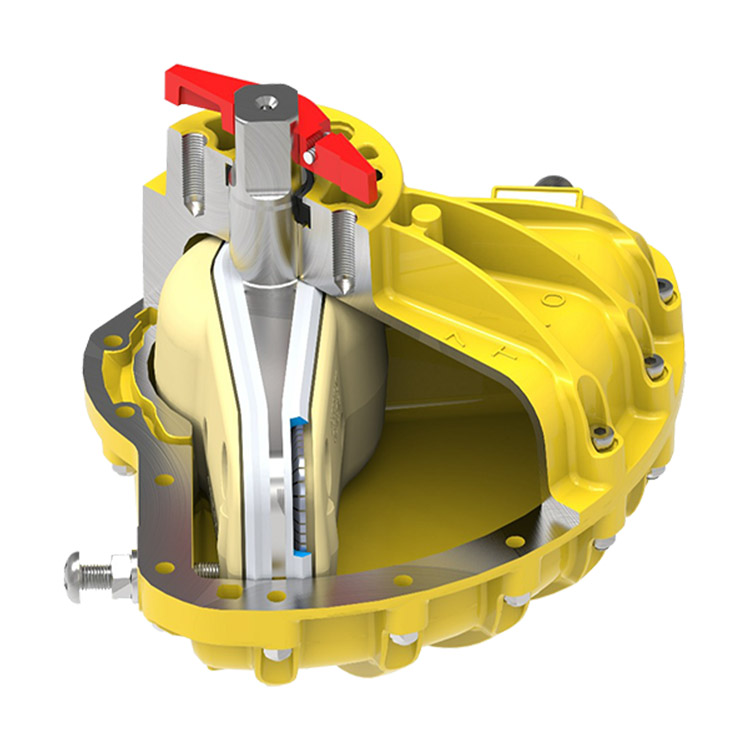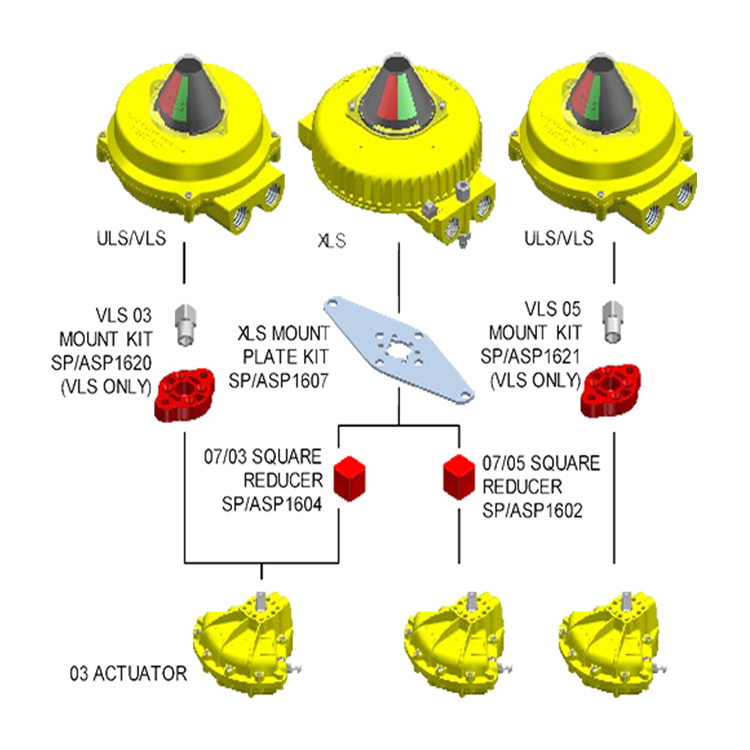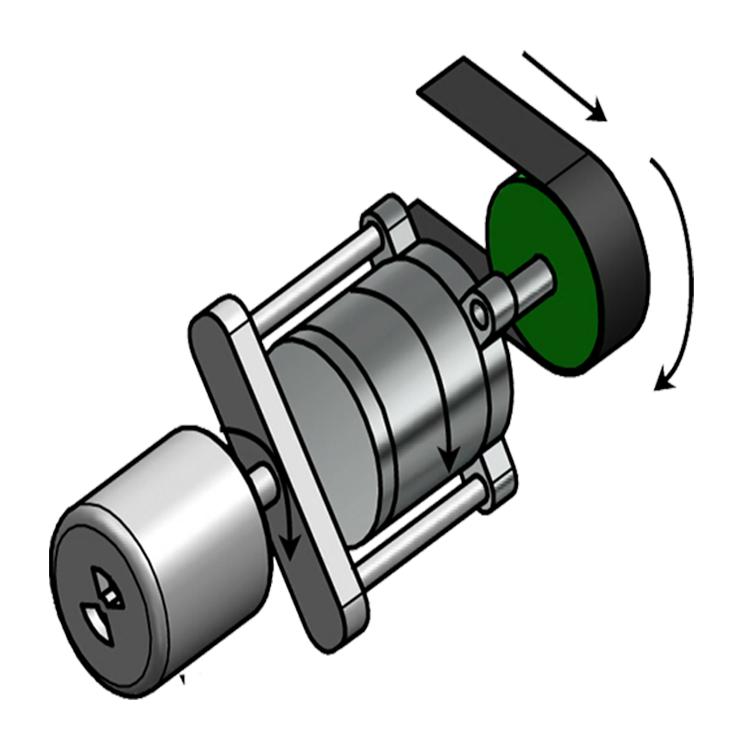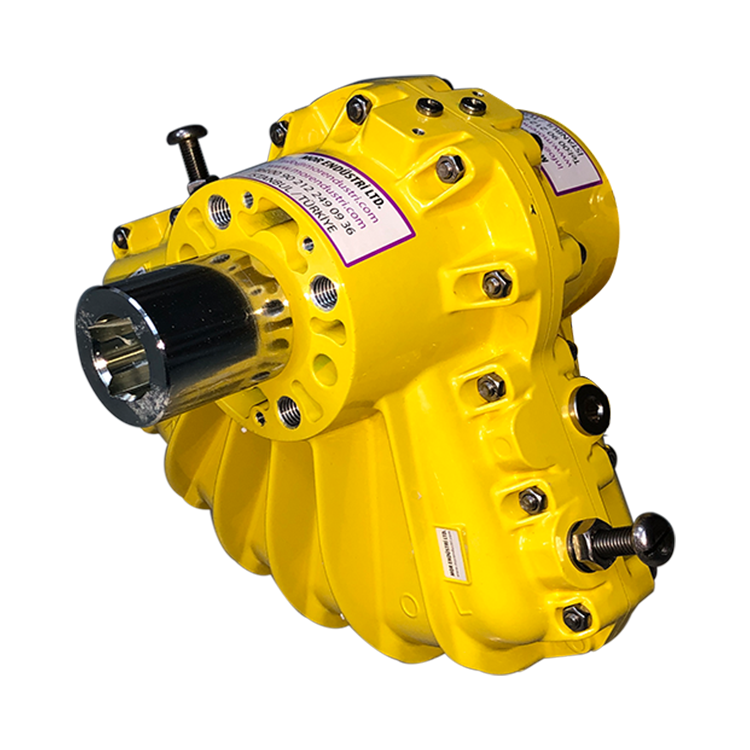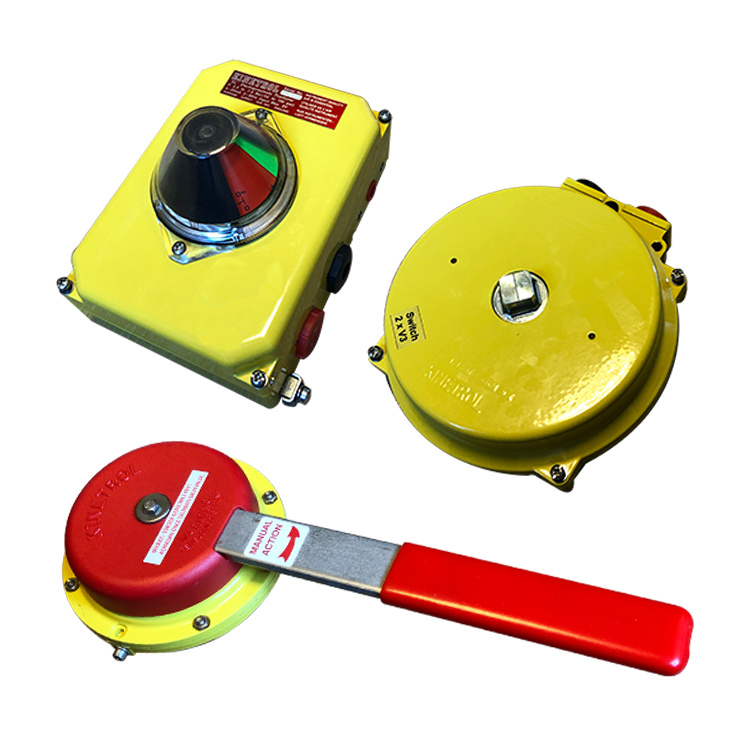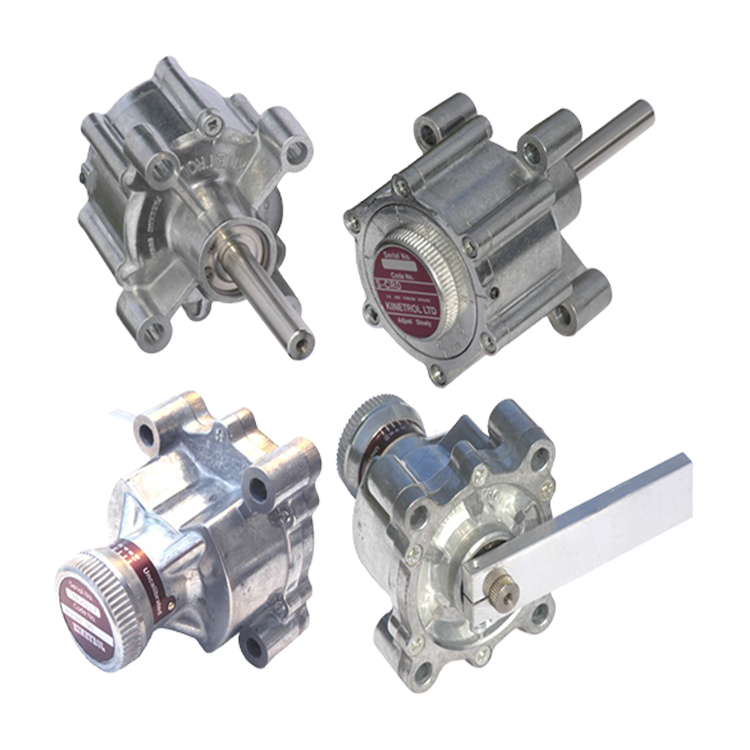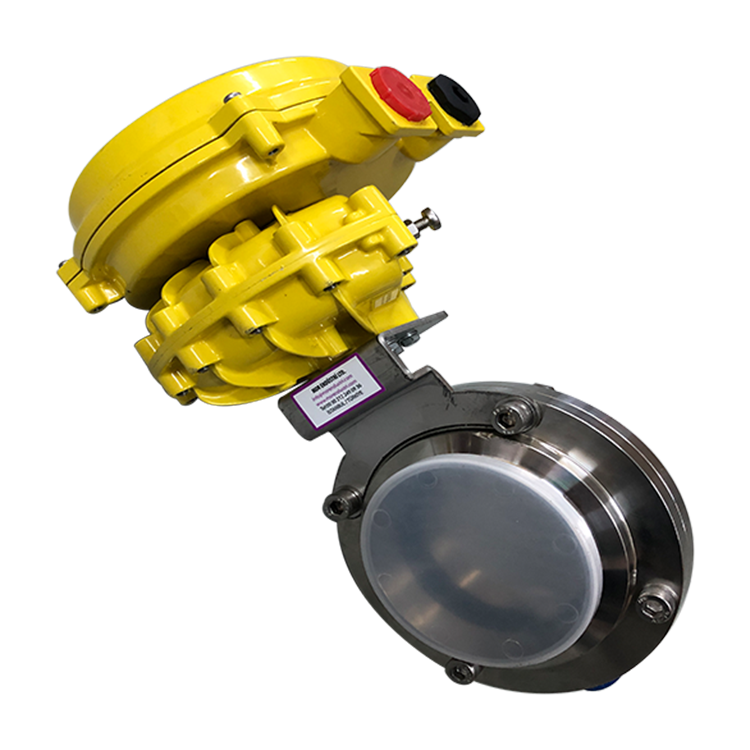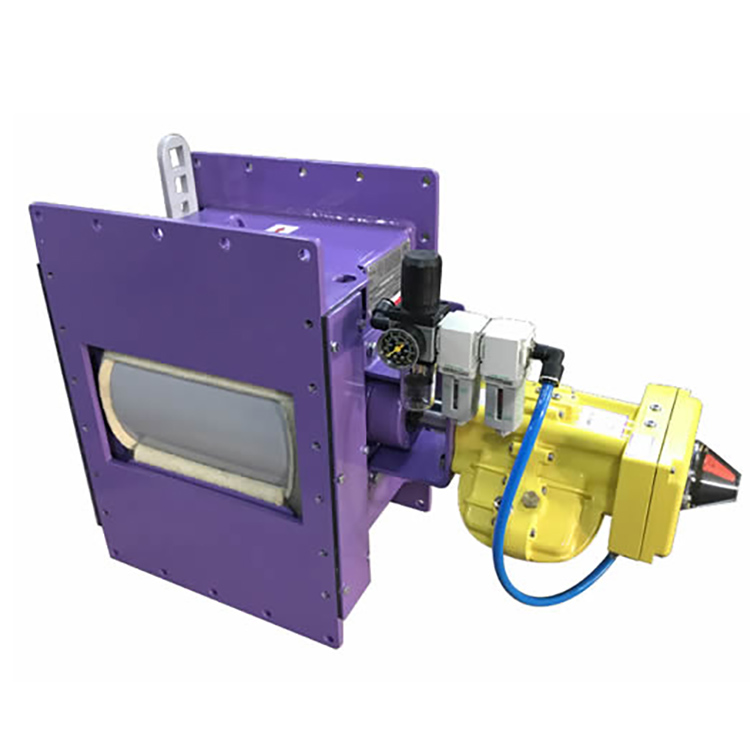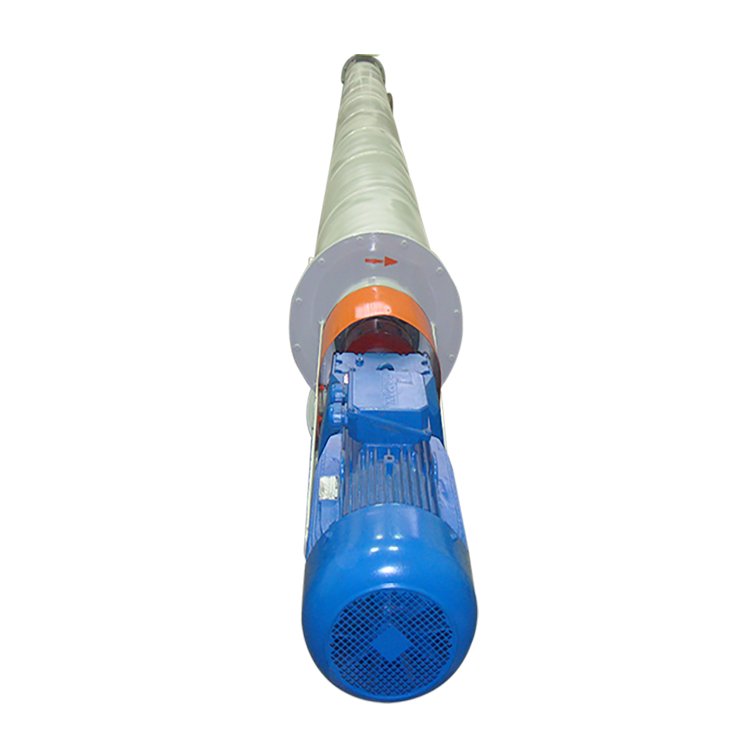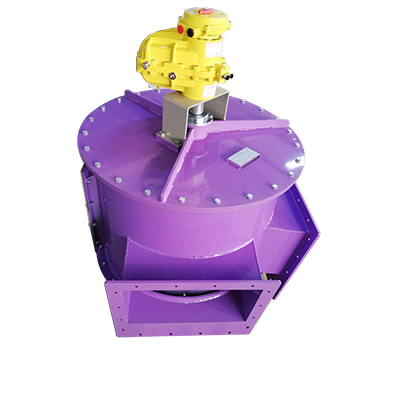Rotary Actuator Basics
Pneumatic rotary actuators are commonly used to convert compressed air pressure (in the form of a cylinder stroke) into an oscillating rotary motion. Like other pneumatic components, they are durable, offer simplicity and high force for their size, and can operate in hazardous environments.
There are two main types of pneumatic rotary actuators: rack and pinion, and vane – both are available in either single or double actuation:
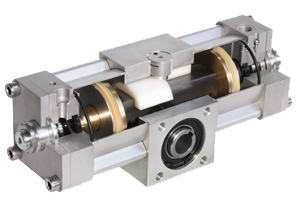
Rack and pinion rotary actuators use a cylinder piston attached to a rack gear. When actuated, the piston and rack move in a linear fashion rotating the pinion gear and output shaft. A double rack unit utilizes two racks on opposite sides of the pinion gear, in effect, doubling the output torque of the unit. A Picture is given above an example of a rack and pinion rotary actuator that converts linear motion via a rack and pinion drive to a male or female output shaft.
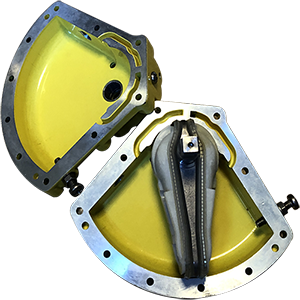
Vane actuators have a cylindrical chamber in which a vane is mounted on a central shaft. Air pressure applied on one side of the vane forces it to rotate until it reaches the end of the stroke. Alternatively, air pressure from the opposite side of the vane drives the shaft in the opposite direction until it reaches the end of stroke. In a double vane style, the motion is typically 90 or 100 degrees, offering less rotational range with double the force of the single vane construction. Rotary actuators can often be overlooked in the specification process as common pneumatic cylinders are specified with a pivot arm to achieve the necessary rotary motion. However, rotary actuators have the potential to greatly simplify applications because they are self-contained components capable of supporting loads due to the internal bearing sets. Additionally, there is no need to design and construct external pillow block bearings. Unlike piston rods exposed to airborne contaminants, rotary actuators can reduce maintenance headaches in dirty environments.



 TR
TR